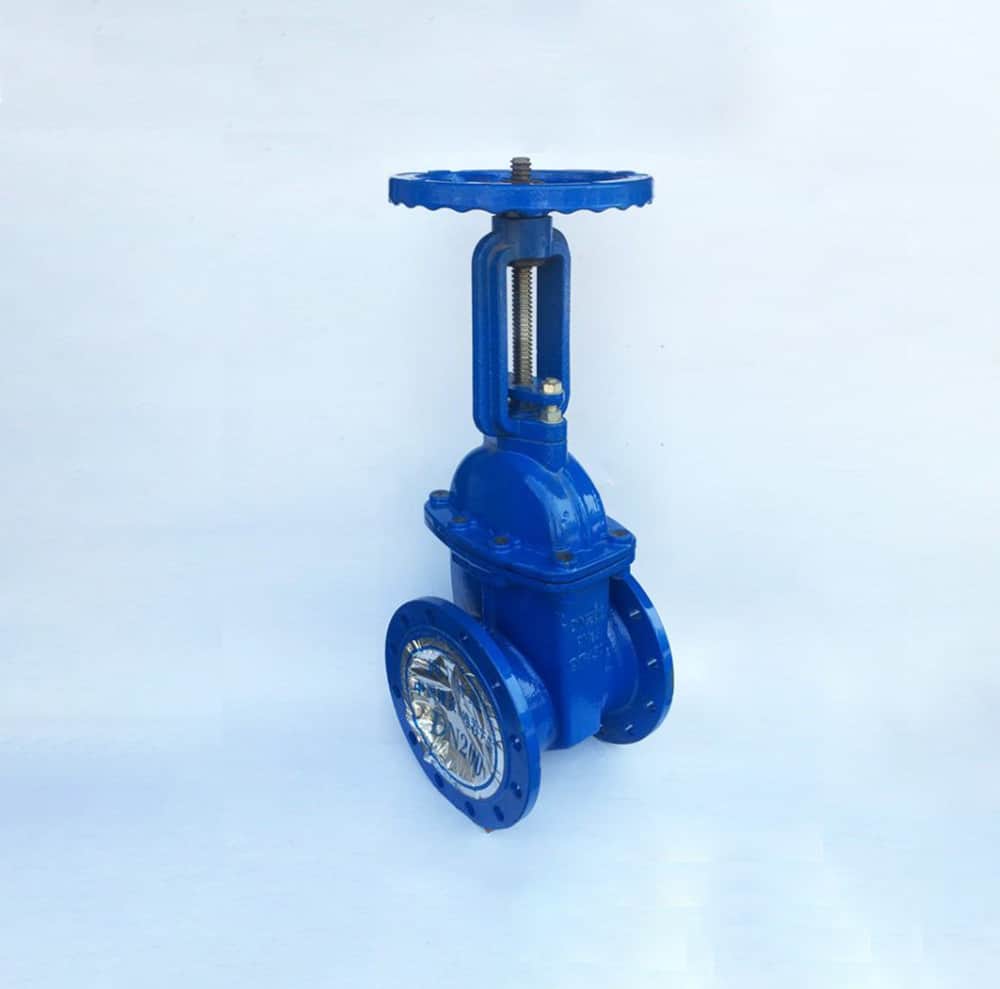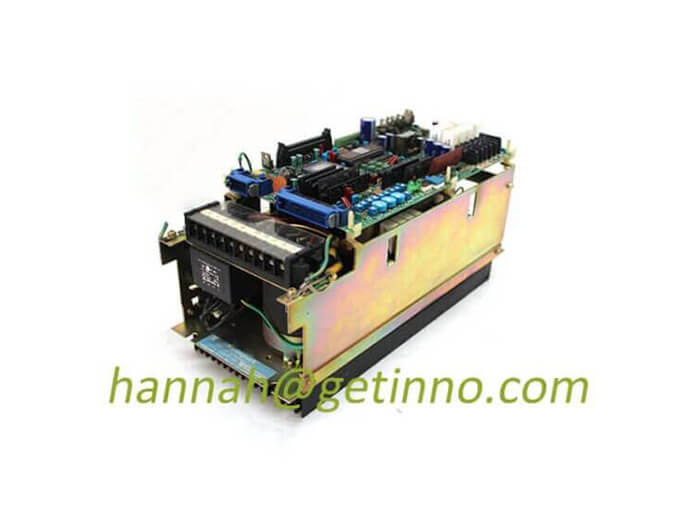Jointly issued by seventeen departments, the robot +” application action is about to start
“robot+”Application Action Implementation Plan At present, the robot industry is booming, which is greatly changing human production and lifestyle, injecting strong momentum into economic and social development. According to the “14th Five-Year Plan for National Economic and Social Development of the People’s Republic of China and 2035 In order to ensure the orderly development of the action, this implementation plan is specially formulated .
1. General requirements
(1) The guiding ideology is guided by Xi Jinping Thought on Socialism with Chinese Characteristics for a New Era, fully implements the spirit of the 20th National Congress of the Communist Party of China, fully, accurately and comprehensively implements the new development concept, accelerates the construction of a new development pattern, focuses on promoting high-quality development, and coordinates development and safety, facing the people’s yearning for a better life and economic and socialDigitizingDevelopment needs, adhere to application traction, typical leadership, and basic support, give full play to the roles of departments, localities, and industries, focus on product innovation and scene promotion, implement classified policies to expand the depth and breadth of robot applications, cultivate robot development and application ecology, and enhance The market competitiveness of independent brand Robots will promote the self-reliance and self-improvement of my country’s Robot Industry, and provide strong support for accelerating the construction of a manufacturing power, digital China, and promoting Chinese-style modernization.
(2) Main goal 2. By 2025, the density of manufacturing robots will be doubled compared with 2020.service robot,Special robotThe depth and breadth of industry applications have been significantly improved, and the ability of robots to promote high-quality economic and social development has been significantly enhanced. Focus on 10 key application areas, break through more than 100 innovative application technologies and solutions for robots, promote more than 200 typical application scenarios of robots with high technical level, innovative application models and remarkable application results, and create a batch of “robot +” applications As a benchmark enterprise, build a number of application experience centers and test verification centers. Promote various industries and localities to carry out “robot +” application innovation practice in combination with the development stage of the industry and the characteristics of regional development. Build an international and domestic communication platform to form a strong atmosphere for comprehensively promoting the application of robots.
2. Deepen the application of “robot +” in key areas
Facing the needs of social improvement and economic development, select key areas with a certain foundation, wide application coverage, and strong radiation-driven effect, focus on typical application scenarios and user needs, and carry out research and development from robot product development, technological innovation, scenario application to model promotion. System advance work. Support the exploration and development of robot applications in some emerging fields.
(1) Field of economic development
1. The manufacturing industry develops new Robotic products such as welding, assembly, spraying, handling, grinding and polishing, and accelerates the application and expansion of robotic production equipment to related fields. Develop specialized and customized solutions and software and hardware products, accumulate experience and knowledge such as model libraries and process software packages, deeply integrate robot control software and integrated application systems, and promote the development of Industrial and commercial industries in the fields of automobiles, electronics, machinery, light industry, textiles, building materials, Medicine and other industries that have formed 3 large-scale applications, sanitary ware, ceramics, photovoltaics, smelting, casting, sheet metal, hardware, furniture and other subdivided fields, spraying glaze, trimming, polishing, grinding, welding, spraying, handling, coding Stacking and other key link applications.Promoting the construction of intelligent manufacturing demonstration factories, creatingIndustrial robotTypical application scenarios.Develop intelligent manufacturing systems based on industrial robots to help the manufacturing industrydigital transformationIntelligent change.
2. Agricultural research and development of operation robots such as plowing and land preparation, breeding and seedling raising, sowing, irrigation, plant protection, picking and harvesting, sorting, inspection, milking, as well as feeding, cleaning, disinfection, disease prevention and control, and environmental control of livestock and poultry aquaculture , Animal product collection and other robot products. Develop special control systems, autonomous intelligent mobile platforms and operating components, promote the adaptation of robots to farmland, agronomy, and varieties, and realize online information perception, fine production control, unmanned autonomous operations, and efficient operation and maintenance management.Create hilly and mountainous areas, large fields, facility gardening, animal husbandry and aquatic products, storage, transportation and processing, etc.agricultural robotApplication scenarios. Accelerate the intelligent transformation of agricultural, forestry, animal husbandry and fishery infrastructure and production equipment, promote the deep integration of robots with agricultural planting, breeding, forestry, and fishery production, and support the development of smart agriculture.
3. Building research and development measurement, material distribution, steel bar processing, concrete pouring, floor and wall decoration, component installation and welding, electromechanical installation and other robot products. Improve the adaptability of robots to the construction and maintenance of infrastructure under special natural conditions such as plateau alpine, severe weather, and special geology, as well as the construction and maintenance of large and complex infrastructure such as long mountain tunnels, super-long-span bridges, and deep-water channels. Promote the innovative application of robots in the production of prefabricated concrete components, blanking and welding of steel components, partition wall panels and integrated kitchen and bathroom processing, as well as in the operation and maintenance of building safety monitoring, security inspections, and high-rise building cleaning. Promote the expansion of the application space of construction robots, and help the coordinated development of intelligent construction and new construction industrialization.
4. Energy research and development Robot products such as energy infrastructure construction, inspection, operation, maintenance, and emergency response. Promote enterprises to break through the key technologies of movement, perception, and operation in complex environments such as high altitudes, narrow spaces, and strong electromagnetic fields. Promote the application of robots in energy infrastructure scenarios such as wind farms, photovoltaic power stations, hydropower stations, nuclear power stations, oil and gas pipeline networks, hub substations, important converter stations, backbone power grids, and important power transmission channels. Promote the deep integration of robots and energy fields to help build a modern energy system.
5. Research and development of automatic guided vehicles, autonomous mobile robots, distribution robots, automatic palletizers, intelligent sorting machines, logisticsdroneand other products. promote 5G,machine vision, navigation, sensing, motion control, machine learning, big data and other technology fusion applications. Support the intelligent transformation of traditional logistics facilities, and improve the work efficiency and management level of warehousing, loading and unloading, handling, sorting, packaging, distribution and other links. Encourage robot companies to develop overall solutions for terminal delivery, and promote the popularization and promotion of multi-modal linkage instant delivery scenarios such as robot delivery and smart letterboxes (smart express boxes). Create a smart logistics system focusing on robots to improve the digital level of commercial logistics.
(2) Social and people’s livelihood fields
6.the medicalHealth research and development consulting services, surgery, auxiliary inspection, auxiliary inspection, intensive care, first aid, life support, rehabilitation, inspection and sampling, disinfection and cleaning, etc.medical robotproduct. Focusing on the needs of rehabilitation treatment such as nervous system injury, post-injury brain cognitive dysfunction, and paralyzed walking aids, breakthroughs in brain-computer interaction and other technologies have been developed to develop auxiliary robot products for injury rehabilitation. Accelerate the promotion of breakthroughs in basic theories, common key technologies, and innovative applications of robotics and medical artificial intelligence, and accelerate the application of new technologies and products such as artificial intelligence-assisted diagnosis systems, robotic 5G remote surgery, and brain-computer interface-assisted rehabilitation systems. Promote the application of robots in hospital rehabilitation, telemedicine, health and epidemic prevention and other scenarios. Encourage hospitals with conditions and needs to use robots to perform precise minimally invasive surgery, build standardized operating rooms for robot applications, and study standard specifications for clinical application of surgical robots. Strengthen the application of robots in the overall disease course service system of pre-hospital management, in-hospital diagnosis and treatment, and post-hospital rehabilitation tracking to help the construction of smart medical care.
7. Elderly care services Develop robot products for the elderly and the disabled, such as assistance for the disabled, bathing assistance, toilet care, rehabilitation training, housework, emotional escort, entertainment and leisure, and security monitoring. Accelerate the application of new technologies such as multimodal quantitative evaluation, multi-information fusion emotion recognition, compliant and adaptive human-computer interaction, and artificial intelligence assistance in the field of elderly care services, and actively promote the application of exoskeleton robots and elderly care robots in elderly care service scenarios. App verification. Encourage relevant experimental bases in the field of elderly care to use robot applications as an important part of experimental demonstrations, develop and promote technology to help the elderly, new technologies, new products, and new models. Research and formulate standards and specifications for the application of robotics to help the elderly and the disabled, promote the integration of robots into different scenarios and key areas of elderly care services, and improve the level of intelligence in elderly care services.
8. Educational development interaction, teaching, competition, etc.educational robotProducts and programming systems, classification and construction of robot service platforms. Increase robot education guidance, improve robot teaching content and practice environment in colleges and universities at all levels, and develop more functions and supporting course content for teaching, training, competition and other scenarios. Strengthen the construction of related majors in robotics engineering, improve the level of experimental robot products and platforms, and strengthen standardized management. Promote the integration and application of 5G, artificial intelligence, intelligent voice, machine vision, big data, digital twins and other technologies and robot technology, actively cultivate new models and new forms of robot campus services, and deepen the application of robots in teaching and scientific research, skill training, campus security and other scenarios .
9. Commercial community services develop catering, delivery, welcome, guide, consultation, cleaning, transportation and other commercial robots, as well as cooking, cleaning, guardianship, companionship, etc.home robot, Strengthen application scenario exploration and product form innovation, improve the level of interaction between intelligent hardware and users, and enhance the value of robot services. Promote the integration of robotics technology with new technologies such as 5G, cloud computing, and intelligent sensing to realize functions such as autonomous navigation, automatic obstacle avoidance, human-computer interaction, voice and visual recognition, and data analysis. Actively promote the integration of robots into service scenarios such as hotels, restaurants, supermarkets, communities, and homes, to meet the needs of commercial and community consumption experience upgrades, and to improve the intelligence level of business services and life services.
10. Safety emergency and extreme environment applications Develop robot products in fields such as mines, civil explosives, social security, emergency rescue, and extreme environments. Enhance robot stereo vision, outdoor navigation and positioning, multi-dimensional information perception, remote disaster warning, robot authentication control and other functions, and develop robots that are resistant to extreme cold, open flames, high temperature and pressure, flammable and explosive, high altitude and low pressure, poisonous, high humidity, Adaptive technology for complex unstructured operating environments such as water accumulation, high dust, radiation, and large changes in the flow of people. Promote the application of intelligent mining, disaster prevention, inspection and duty, underground rescue, intelligent cleaning, unmanned transportation, geological exploration, dangerous operations and other mining scenarios. Promote the application of safety production scenarios such as on-site inspections of hazardous chemical production devices and storage facilities, on-duty on-duty, and special operations. Promote the application of explosives charging, production preparation, packaging, loading and unloading transportation, online detection and other civil explosive industry scenarios. Promote the application of social security scenarios such as security patrols, anti-smuggling and security inspections, anti-terrorism and anti-riot, investigation and evidence collection, traffic border defense, public security control, special warfare disposal, and service management. Strengthen the application of explosion-proof and explosion-proof, fire inspection, engineering rescue, marine fishing, marine oil spill and ship rescue of hazardous chemicals, natural disaster rescue, safety production accident rescue, nuclear emergency safety rescue and other hazardous environment applications. Promote the application of extreme environmental scenarios such as space, underwater, and deep ground.
3. Enhance the basic support ability of “robot +” application
(1) Build a robot industry-use collaborative innovation system Encourage industry and use to jointly build innovative institutions such as innovation consortiums and innovation centers in the field of robot applications.Support user units to participate in high torque densityservo motor, high dynamic motion planning and control, human-computer interaction and other core technologies of the robot industry chain, dig deep into and release potential application requirements, and jointly develop advanced and applicable robot products and system solutions. Carry out “one-stop” application innovation covering the whole process of product design, technology development, process optimization, mass production and demonstration and promotion. 8 Encourage industry and users to jointly participate in the promotion activities of the “unveiled list” of the special robot industry chain, and drive robot companies to jointly tackle key problems and transform results. Improve robot technology support services, actively promote industry-finance docking, business incubation, technology transfer and transformation, spare parts services, technical after-sales services, etc.
(2) Building a “robot +” application experience and test verification center Relying on users, robot companies and system integration companies, build scenario-based application experience centers for household, business, education, medical care, and elderly care to improve user experience and expand product consumption and promotion . Relying on users, robot companies and third-party public service agencies, build a test and verification center with the capabilities of robot application technology standard test verification, quality inspection, and innovation incubation, increase the accumulation of application data, and improve the safety, stability, and reliability of robot products performance, ease of use, etc.
(3) Accelerate the development and promotion of robot application standards Relying on relevant standardization technical organizations, establish a cooperation mechanism for cross-industry robot standardization work, strengthen the coordination of standardization work in cross-industry application fields, and promote mutual adoption of cross-industry standards. Carry out the development and promotion of standards for robot application processes and special algorithm models, fusion device interfaces, application data security, and human-computer interaction security in key industries. According to the access requirements of specific industries, strengthen the research on the special safety requirements and detection method standards of robots. Carry out standardization work such as general technical specifications for new robot products, modular design and manufacturing, and application safety and reliability. Promote the standardization of proprietary security basic standards, product standards, method standards, etc. in the field of robotic emerging technologies. Research and formulate standards and regulations related to robot ethics. Strengthen the implementation of standard applications. Promote international cooperation in robot application standards.
(4) Carry out industry and regional “robot +” application innovation practices Encourage industry authorities to combine application industry development planning, scientific and technological research and key project construction to carry out robot product innovation and application demonstration and promotion in various industries. Guide and support regions with conditions and needs to carry out the “robot +” application action in the region around characteristic and advantageous industries. Relying on leading enterprises and industrial clusters, develop mature, emerging and potential application scenarios of open robots, and carry out “robot +” application innovation practices with active collaborative innovation, remarkable application results, and high promotion value.
(5) Build a “robot +” application supply and demand docking platform to build a “robot +” application supply and demand docking platform, and carry out resource sharing, information exchange, and complementary supply and demand docking activities. In the mature application field, select a group of benchmarking enterprises and typical scenarios with outstanding application results and strong influence, strengthen the supply of high-end robot products, and increase the depth and breadth of robot application. In the field of emerging applications and potential demand, explore the use of methods such as “revealing the list and leading the team” to solicit robot application solutions, and promote supply innovation with demand traction. Publish key robot technology and product promotion catalogs, and promote online application Display model rooms.
4. Strengthen the guarantee of “robot +” application organization
(1) Strengthen organizational leadership and play the role of the leading group for the construction of a national manufacturing power, establish a multi-departmental coordination and central-local linkage working mechanism, establish a coordinated promotion phalanx, and set up departments, industry organizations, key enterprises, and scientific research departments by industry and field. A joint working group composed of institutes and key regional governments. Strengthen the research on the rules and regulations and ethics related to the application of robots in key industries, carry out normalized monitoring and tracking of robot applications, and promote the construction of a regulatory system that adapts to the characteristics of robot applications in various industries.
(2) Improve policies to support relevant departments and localities to promote the application of robots as a key direction of technological innovation, industry planning, and industrial policies, coordinate policies, funds, and resources to support them, and increase investment in innovative applications of robots. The science and technology department and the robot development and application department jointly promote the transformation of the innovation achievements of the national science and technology plan, guide robot companies to increase investment in research and development, and strengthen intellectual property protection. The Human Resources and Social Security Department, together with the Robot Development and Application Department, will carry out an assessment of the impact of robots on employment in a timely manner, and promptly promote the transfer of affected workers to employment. Encourage central enterprises and state-owned enterprises to open robot application scenarios, establish a fault-tolerant mechanism, and support enterprises to purchase and use first.
(3) Deepen publicity and exchanges All localities, relevant enterprises and industry organizations should track, summarize and evaluate new situations, new problems and new experiences in the process of application actions in a timely manner, summarize and demonstrate effective practices that have a strong driving effect and can be replicated and promoted, and publicize Apply good typical experience. Relying on relevant conferences and exhibitions in various industries, strengthen the exchange and display of robot application results. Guide relevant units to compile annual reports on the application of “Robot +”, and release a collection of innovative application cases. Make full use of multilateral and bilateral cooperation mechanisms to promote the “going out” of robot products and solutions in different fields to achieve win-win cooperation.
(4) Strengthen talent training Cultivate and introduce high-end R&D talents and standardization talents for robot applications, strengthen international exchanges of talents, and build leading talents and innovative teams. Encourage robot companies, 11 user units to cooperate with ordinary colleges and universities, scientific research institutes, vocational colleges, etc. to jointly build talent practice and training bases, jointly carry out robot application talent training, and provide more employment channels. Organize robot application skills competitions in subdivided industries to discover and train more high-quality technical and technical talents for robots.
The Links: 3BSE030220R9 3BSE032401R1 DISPLAY
Pre: YOFC’s 2016 smart manufacturing... Next: Commercial indoor robot is the hot sp...




